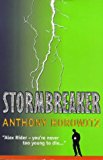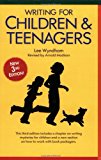Mysteries and thrillers are always popular reads. Like any writing for children and young people, the content of these books will vary across the age groups. However, there are certain mystery and thriller conventions that will help you write a compelling story.
A mystery
There is a central question that needs to be answered, for example who is the killer / stalker / thief? A number of additional minor questions will contribute to the complexity of the novel or story. These may be linear (that is leading inexorably to the central question) or parallel (running alongside the central question, but having no real affect on it other than to complicate things for the hero(ine)).
A hero(ine)
 A hero or heroine who tries to unearth the mystery, often at great risk. In a teen or children’s novel, this needs to be someone of a similar age to the reader. They need to be sympathetic and vulnerable (so we can believe their life or safety is really in danger) but at the same time have the strength of character to overcome. Usually the character develops the strength as the novel progresses. The main character in a thriller (unlike a spy or action hero) is rather ordinary, but will have some attribute or talent that they can draw on when the going gets tough. In a children’s novel the main character usually has to deal with problems at school or home in addition to unearthing the mystery.
A hero or heroine who tries to unearth the mystery, often at great risk. In a teen or children’s novel, this needs to be someone of a similar age to the reader. They need to be sympathetic and vulnerable (so we can believe their life or safety is really in danger) but at the same time have the strength of character to overcome. Usually the character develops the strength as the novel progresses. The main character in a thriller (unlike a spy or action hero) is rather ordinary, but will have some attribute or talent that they can draw on when the going gets tough. In a children’s novel the main character usually has to deal with problems at school or home in addition to unearthing the mystery.
Stormbreaker by Anthony Horowitz is an example of a teen mystery thriller for boys although it also falls into the ‘spy’ category. It is of course the first in the highly successful Alex Rider series.
Threat to safety of hero(ine)
This is what sets a thriller apart from a simple mystery. In a children’s thriller, characters rarely die, but there must still be some kind of threat.
A villain
A villain whose identity may or may not be known. In thrillers, the ‘anonymous’ villain may be more frightening than the known one. ‘Wolf in sheeps clothing’ villains are very popular.
The nemesis
The nemesis may or may not be the villain. It may be someone who is always picking on the main character or putting them down. They eventually get their come-uppance.
The authorities
In books for younger children, the authorities must be contacted if a crime has been committed. This doesn’t always happen with books for teens. Whether or not you choose to bring in the police, welfare officer etc, be careful not to allow them to ‘save the day’.
Love interest
In a thriller there’s not much time to develop a full-blown romance (leave that to the love story genre) but there’s usually a suggestion that a relationship could develop with one of the characters. This is often one of the ‘red herring’ characters. In books for younger children, romance is rarely a feature. See writing for children: sex, love and romance.
Character pairings
 The main character usually teams up with someone to help solve the mystery. This is often someone they have already been in conflict with. Beware though not to allow the partner to take the initiative away from the hero(ine), particularly if the partner is an adult or a boy (don’t fall into the ‘helpless female’ trap if your main character is a girl). The partner may or may not be the ‘love interest’. Give your partners contrasting and / or conflicting attributes to help deepen characterisation and dramatic conflict.
The main character usually teams up with someone to help solve the mystery. This is often someone they have already been in conflict with. Beware though not to allow the partner to take the initiative away from the hero(ine), particularly if the partner is an adult or a boy (don’t fall into the ‘helpless female’ trap if your main character is a girl). The partner may or may not be the ‘love interest’. Give your partners contrasting and / or conflicting attributes to help deepen characterisation and dramatic conflict.
Tightrope by Gillian Cross is a good example of a teen thriller with a female protagonist
Conflict
Conflict between the hero(ine) and various characters usually threatens to scupper the unearthing of the mystery by distracting them from solving the mystery. The novel must build to the final conflict between the hero(ine) and villain.
Obstacles and setbacks
The hero(ine) must overcome a number of obstacles in their quest and suffer setbacks on the way.
Suspense
A series of conflicts, obstacles, setbacks and resolutions contribute to the suspense of the story. The reader must have a sense of ‘two steps forward, one step back’. In a traditional mystery there are usually two minor climaxes (with minor victories for the hero(ine)) before the main one.
Clues
A thriller or mystery must be very carefully thought out. Clues must be placed at intervals through the text to give the reader an opportunity to solve the mystery for themselves or at least point them in the right direction. These must not be too obvious, but at the same time cannot be too obscure or else the pieces of the puzzle will not fit together in the reader’s mind.
Red herrings
Red herrings are an essential mystery / thriller convention. These are usually false clues to the identity of the culprit, turning suspicion on innocent characters. This also adds to the tension because the reader may think that the hero(ine) is in danger when the ‘red herring’ enters a scene. It’s a good idea to have at least one red herring pointing to someone the hero(ine) trusts. Red herrings may also be sets of circumstance, clues, motivations etc.
Motives
All your characters must act out of motive. Only serial killers (not appropriate for children) act without apparent motive. Suggest motives at the right time and you could set up another red herring.
The twist
And finally, the twist. Try to have at least one; two or three at the most. More than that and you may lose your reader. Twists work best when they are counter to the reader’s expectations, but not so bizarre to make the book implausible (eg Bobby Ewing in the shower in Dallas!) Twists, clues and red herrings should work together.
Book recommendations
- Writing for Children and Teenagers by Lee Wyndham has a good chapter on writing mystery novels.
- Writing Crime Fiction by Lesley Grant-Adamson is a good general introduction to writing suspense, although not specifically aimed at children.
Links
- The Guardian Unlimited provides a portal into a host of children’s writing related sites.
- Fun 2 Learn is looking for short stories for children. They offer a small fee.
- The Society of the Children’s Book offers advice for writers and illustrators.
This is the second article in the Crafty Writer’s Series: Writing for Children. See also Writing for Children: Sex, Love & Romance.
Still to come: historical novels; picture books; SF & Fantasy; the children’s publishing industry.
No related posts.


Pingback: The Crafty Writer Book Club is Open! at The Crafty Writer